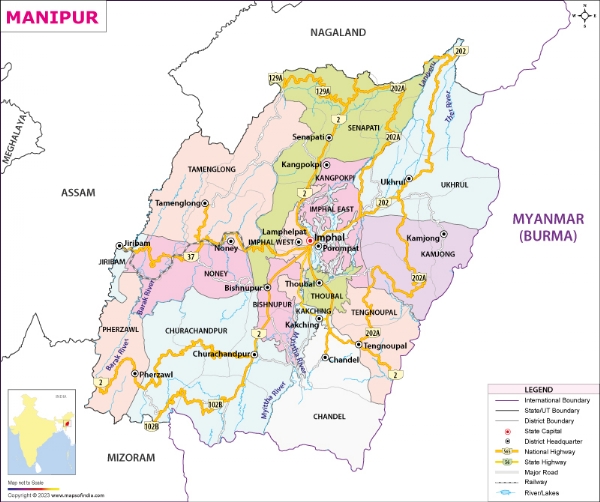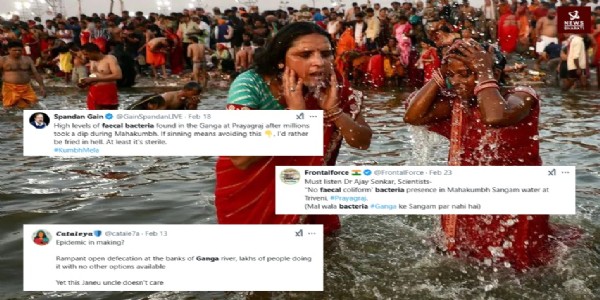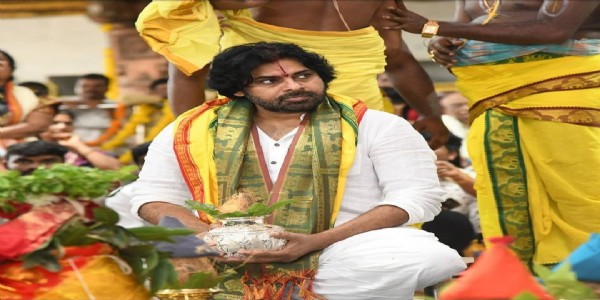The Battle against Hindus in Manipur & What is the Solution?
While tribal rivalries, administrative faults, and local issues are at play in Manipur violence, there are greater civilizational forces playing behind the screen, forces which dictate the long-term impacts on society, religion, culture & civilization of Bhāratavarṣa and the world.
Total Views | 141
(This article is based on a Twitter Thread by Pankaj Saxena)
Manipur is currently fighting a civil war. The hill tribes of the Kuki clan are clashing with the Meitei tribe of the valley. The immediate trigger is the push against the illegal poppy plantations in Manipuri hills which are mostly inhabited by the Kuki tribes who are angered at the government's action.
Manipur is currently fighting a civil war. The hill tribes of the Kuki clan are clashing with the Meitei tribe of the valley. The immediate trigger is the push against the illegal poppy plantations in Manipuri hills which are mostly inhabited by the Kuki tribes who are angered at the government's action.

Apart from this, another trigger is the High Court's order to include some Meiteis also in the Scheduled Tribe category angering the Kuki Christian clans who see it as an erosion of their monopoly over the privileges that come with the ST tag. While this is true, and tribal rivalries, administrative faults, and local issues are at play, there are greater civilizational forces playing behind the screen, forces which dictate the long-term impacts on society, religion, culture & civilization of Bhāratavarṣa and the world.
Understanding these great civilizational forces helps us to perceive the long arcs of history, arcs that are thousands of years old and work in slow motion but ultimately have the most impact on the history, society, and culture of any region. One of these civilizational forces is Christianity, which is a major player in the Northeast. Many of the northeastern states are heavily Christianized. Mizoram and Nagaland are more than 90% Christian, while Meghalaya is more than 75% Christian.
Right now, Arunachal Pradesh is being aggressively and ruthlessly Christianized, one of the last states of the North-east to have evaded Christianity until the 1990s.
In Manipur, the Christian population is around 42%. More on Manipur’s demography will be discussed later. This information is enough to show that any important issue or conflict in north-east is instigated, arbitrated or appropriated by Christianity.
The Church is not just religious but heavily political and institutional forces in Christian-dominated states of the north-east, where even the State aid trickles down to the last man through the direct agency of the Church.
The Church is the lynchpin of the North-east
It is important to understand the maneuvers of Christian missionaries, the Church, and the Islamic groups in the northeast. Without understanding the intentions, aims, and modus operandi of these forces the grand civilizational fight which is going on cannot be understood and without that, the long arcs of history cannot be understood.
One might ask about the very usefulness of understanding the long arcs of history. It is important to every individual as these long arcs manifest into local clashes with violence against individuals which seems arbitrary and random but originates in deep civilizational issues and causes but at the same time is extremely lethal to individuals on the ground.
Understanding long arcs is necessary not just for statesmen to create better policies, but also for the populations for pushing the right issues in democracy through elections. Coming back to Manipur and its history, Manipur is called so because it really does look like a maṇī – a gem – geographically from above. From all four sides it is surrounded by mountains and at the center is a low-lying river valley.
It is mentioned in the Mahābhārata as the place where Arjuna goes during his exile and penance and marries a local princess there. So the state has a connection with the core Hindu land since the time of the Mahābhārata, or at least 3,500 years.
To discuss the demography of the state, the valley is inhabited overwhelmingly by the Meitei Hindus who are Gauḍīya Vaiṣṇava-s. While the state had the Mahābhārata connection since thousands of years, many Hindu communities, including Brahmins started migrating and settling in the valley in the first century CE.
This inflow kept through all the intervening centuries but increased during the Mughal rule, keeping afresh the Sanātana connection and the Hindu character of the Meitei inhabitants of the valley. In the early 18th century, Gauḍīya Vaiṣṇava sect became more popular amongst the Meitei Manipuris as King Charairongba was a great devotee.
King Charairongba was the disciple of a Sylheti Hindu ascetic by the name of Shantidas Adhikari who re-identified Manipur as the famous place in the Mahābhārata, just like Chaitanya Mahaprabhu re-identified many places from the life of Lord Krishna all over Bhāratavarṣa.
This theme can be seen to be repeated in parts of Assam, Tripura, Arunachal, Sikkim etc., where Hindus from the mainland kept re-infusing and re-invigorating the Sanātana character to make sure that the communities there do not become secessionist and fall down into apathy.
But since the British invasion, things have not been so good and the British actively promoted the Christianization of the hill tribes of the north-east, because they viewed Christianity as the elixir of pacification of local tribes. They believed that the conversion of the hill tribes will result in their close collaboration with Christian British Empire and so proceeded on the path of conversion.
However, it was the apathy of the independent Indian state in its first 65 years of existence which changed the demography of the north-east, letting Christian missionaries go rampant and letting the north-east disappear from the imagination of the rest of the Hindus in India. This brings us back to the geography of Manipur which has at its center the capital city of Imphal and the valley where most Hindu Meiteis reside and is surrounded by Christian hill tribes from all sides. The hills are inhabited by tribes that are almost 100% Christian.
North and north-West mostly by Naga Christian tribes and south, south-west, and east by mostly Kuki Christians (Kuki is the blanket term for various Mizo tribes - all Christians). Geographically the valley is very small and comprises just around 20% of the total land of Manipur and contains more than half of the population while the surrounding hills comprising 80% of the hills have around 50% of the population. So around 49% of Hindus and 9% of Muslims live on 20% land of in Manipur, while 43% of Christians reside on 80% of hills that encircle the valley. The lands of the hill tribes are protected as tribal lands by law because they are inhabited by tribes which are declared as Scheduled Tribes although they are Christian and thus their lands are protected from settling by outsiders.
As most inhabitants of these hills are Christians these lands are virtually Christian protectorates where Hindus or non-Christians have very little currency. Thus, most of the Christian lands of the northeast are safe from the Bangladeshi Muslim infiltration, while the Hindu lands are open for all kinds of settlements and struggles.
The laws in Hindu-dominated the valley of Manipur are different as Meitei Hindus are not classed as ST. This has resulted in a very unbalanced situation harming Hindus. While Hindu lands in the valley are unprotected and bitterly contested by Hindus, Muslims, and Christians, the hills are virtually undisturbed Christian protectorates.
The demographic situation of Manipur is very volatile with Hindus losing every decade. Currently, while 49% are Hindu and Sanmahi (tribal pagan religion friendly with Hindu dharma), 51% are Christian and Muslim (42% Christian and the rest Muslim). The Muslims of Manipur are called Meitei Pangals (Pangal simply means Muslim in Meitei language).
Most of them descend from Mughal soldiers and Meitei women and they have been joined by infiltrators from Assam’s southern Muslim majority districts around Barak valley and also from Bangladesh. Gradually Christians from the hills and the Pangal Muslims are pushing Meitei Hindus out of their homes and their lands. The percentage of Hindus in Manipur is dropping with every passing year and decade. And the percentage of Christians and Muslims is increasing.
As per the census data this is how Hindu dharma has been decimated in most parts of Manipur and is on its way to extinction in valley too if Hindus of the mainland don’t wake up to help them. Hindus were 96% in 1901, 95% in 1911, 94% in 1921, 92% in 1931, 89% in 1941, 81% in 1951, 74% in 1961, 67% in 1971, 63% in 1981, 58% in 1991, 54% in 2001, 52% in 2011, 49% in 2021. Hindus have lost around 32% of their population in the last 75 years.
The decline has been sharp after independence and in 2020 Hindus dipped below 50%. If the trend continues and Meiteis start converting more, Manipur will become 100% Christian very soon. The violence is of course not one way and Meiteis also retaliate violently sometimes but that is not the point. To equate the Kuki Christian violence with Metei Hindu violence is to equate the actions of Hindus and Muslims in the mainland when riots happen. Yes, Hindus retaliate too in mainland India but in every case the riots are started by those fundamentalist Muslim groups which cannot tolerate peaceful co-existence by Hindus. In that case, is it okay to blame the victims and the perpetrators equally? Is it okay to blame Jews and Nazis equally?
Just like on the mainland, Meitei Hindus in Manipur just respond to violence to protect themselves and rarely ever initiate it.
So yes, Meiteis also retaliate but when Kuki or Naga Christians perpetrate violence against Meitei Hindus, their prism is always Christian and they always seek to engage in land Jihad for the Church. On the other hand Hindus see it through local and tribal lens. So after every such violence and riot, the Church has more property, more occupied lands, more Christians in sheer actual number. And after every such violence, Hindus have fewer lands, less property, less number of Hindus in total.
Can we still say it is not a Hindu-Christian fight?
Some say it is just tribal violence and there are some local reasons. Of course there are tribal rivalry and local triggers. But that is not the complete story. The recent clashes started as the government started demolishing illegal churches and poppy plantations.
It is mostly Kuki Christians who grow poppies as their lands can’t be settled by anyone else. They are the ones who engage in the illegal drug trade. So they are naturally angry at the government for finally trying to bring in the rule of law in the north-east. Media will portray it as tribal warfare and some Hindus might also believe so but Christians see it as a Holy War, a War for Jesus Christ, and that is why they keep cleansing land after land of non-Christians. And that is the lesson we need to learn.
Hindus see these clashes as local and tribal. Christians and Muslims see it as Holy War and Jihad. And that’s why the impact of Hindu gains and violence will never be permanent, but impact of Christian violence will be permanent. That is why Hindus always lose civilizationally and Christians and Muslims always win civilizationally. Gradually Hindu dharma is losing out.
It has held out so far because Meiteis are also fierce, but if the rest of the Hindus continue in their apathy, then sooner or later they will break. There are international angles to this story too. Many Kuki Christian tribes inhabit in Myanmar too just across the border. This is where they get training from Pakistan and China.
In almost seven decades of apathy from the Indian State, an entire industry of international arms smuggling and training of Christian and Islamic terrorists on the soil of India’s neighboring country, under the guidance of China and Pakistan has been going on.
The current NDA government has started paying attention to the north-east but it is Hindus in common who need to be interested in the north-east. It is when we start seeing these clashes through the Hindu-Christian lens and see it as one string in the long civilizational war, then we will start winning.
It is when we start seeing the long arcs of history then we start responding with long-term strategies and start making long-lasting policies. The war in Manipur is the war for the soul of Sanātana dharma. The war in the north-east is a battle for dharma. Until Hindus, here on the mainland, start seeing the events in the north-east through this dharmic Hindu prism, they won’t start winning the war.







